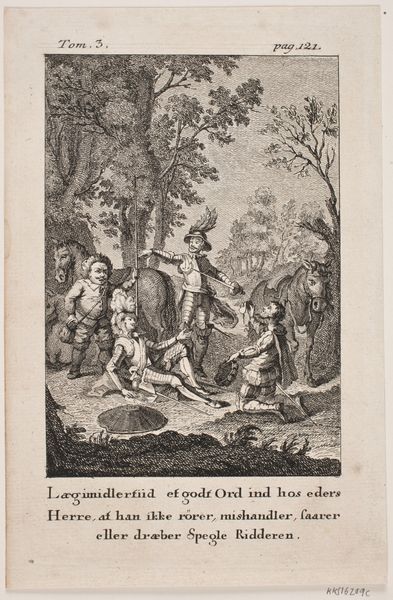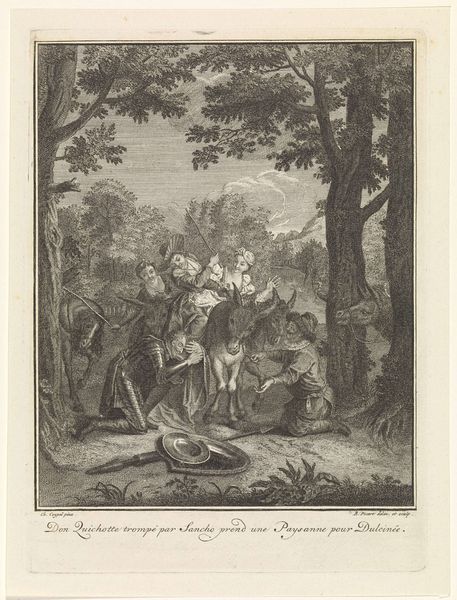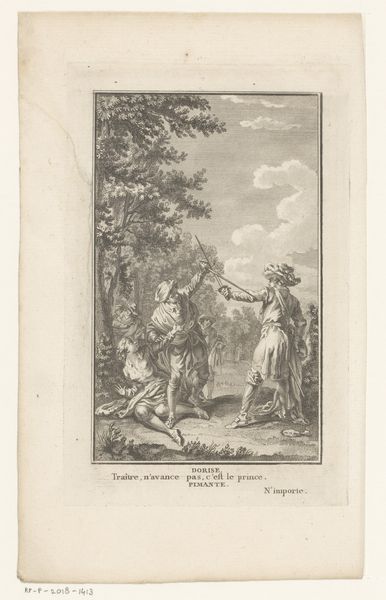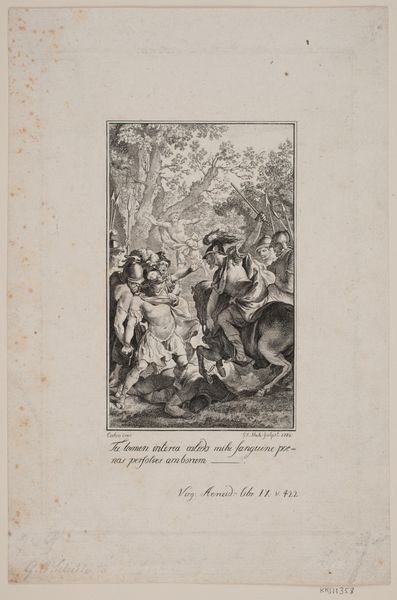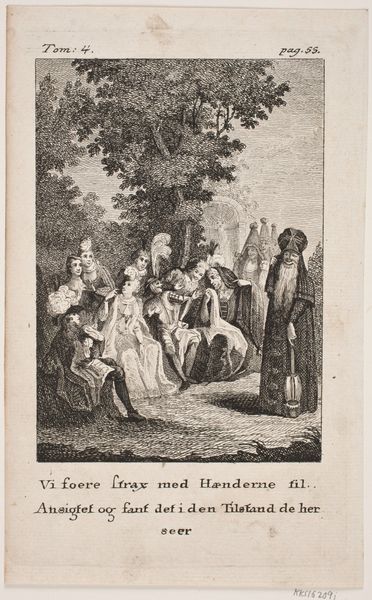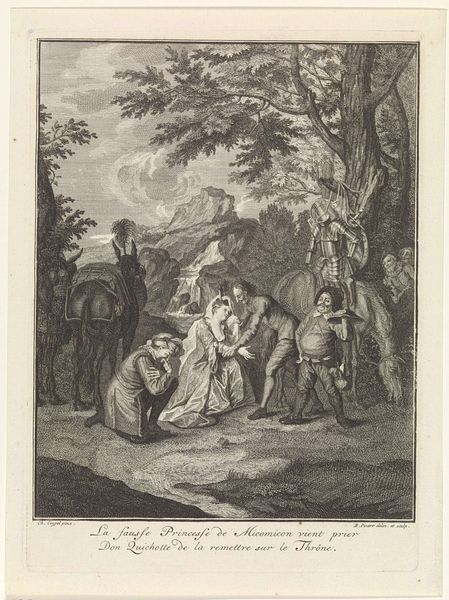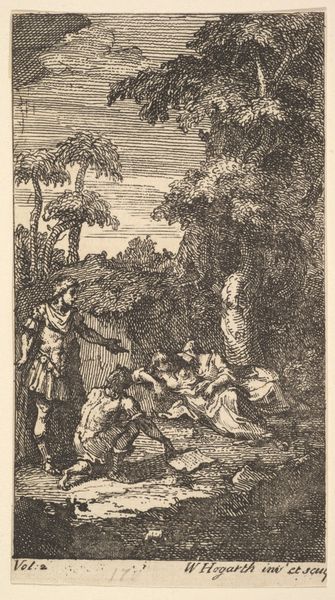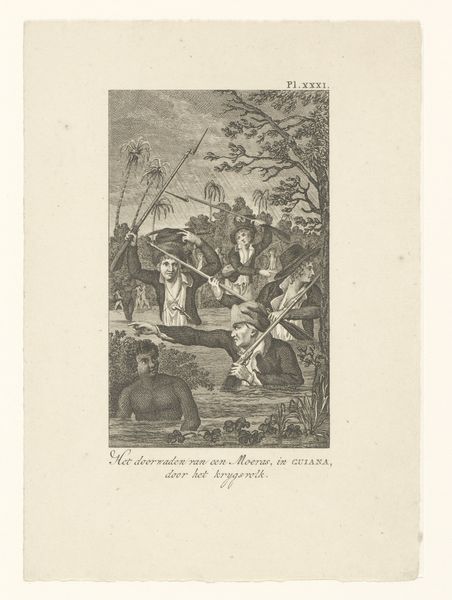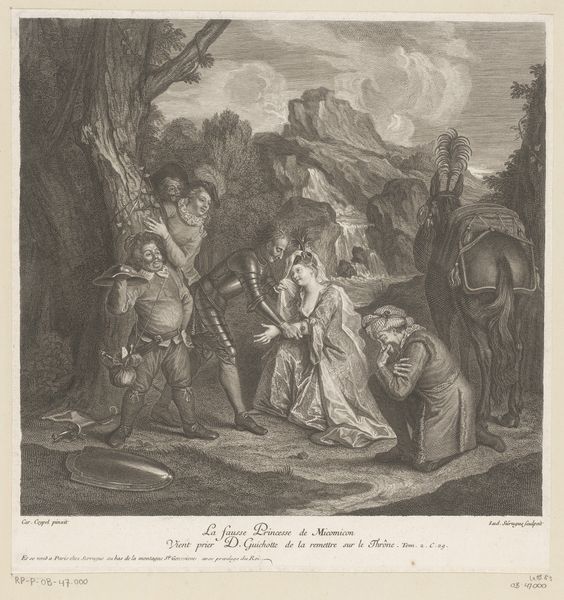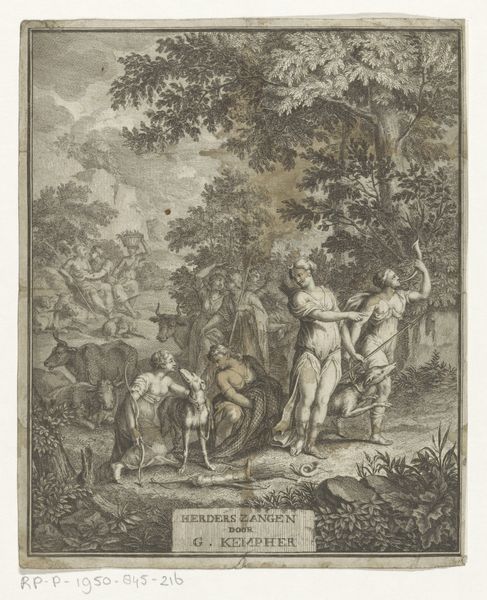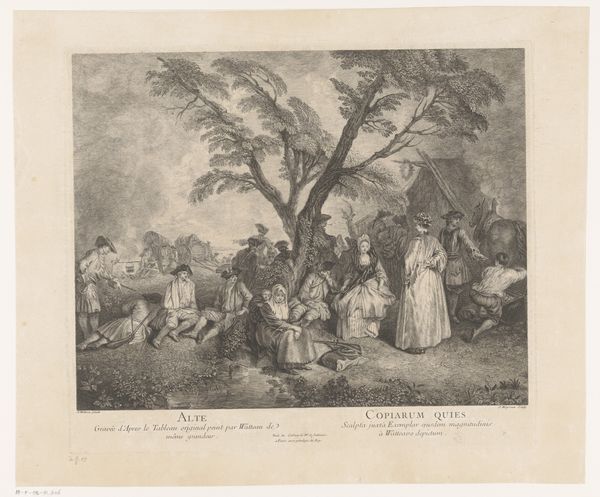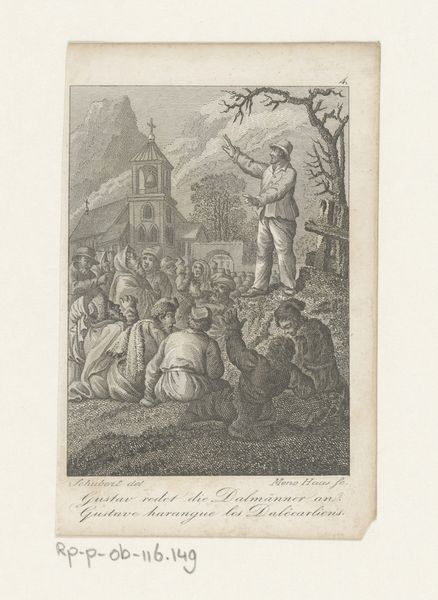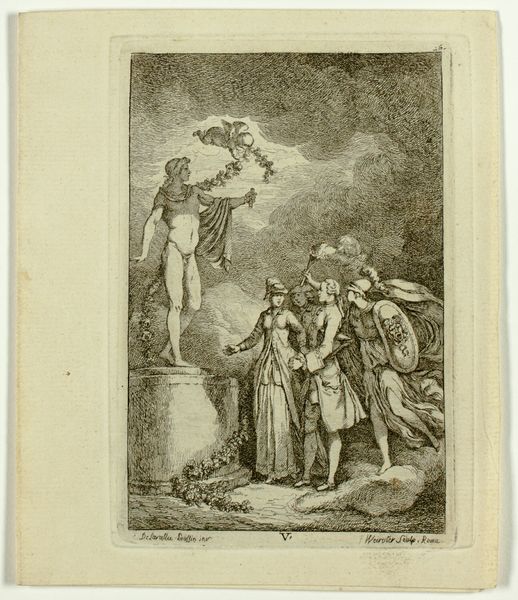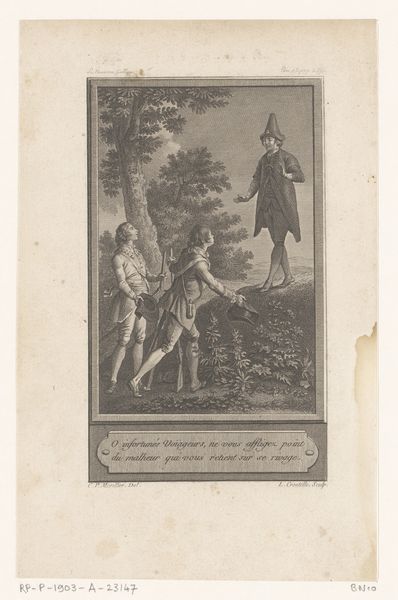
Dimensions: 165 mm (height) x 104 mm (width) (plademaal)
Georg Haas created this illustration for Don Quixote using etching, a printmaking technique that involves biting lines into a metal plate with acid. The plate is then inked and printed onto paper. The network of finely incised lines describes the scene, imbuing the image with a stark and linear quality. The controlled and deliberate process of etching allowed Haas to create a detailed composition. Etching was often used for illustrations, due to its ability to produce multiple identical images efficiently, contributing to the wider distribution of texts like Don Quixote. The print also brings questions of labor and class into focus, both in the narrative it illustrates and in its own making. Haas, as a skilled artisan, would have undergone extensive training. His expertise contrasts with the often-humorous depictions of the characters in Cervantes' novel. Recognizing the labor and materials involved in its production allows us to appreciate this print as more than just an image; it is a testament to the artistry and craft traditions of its time.
Comments
No comments
Be the first to comment and join the conversation on the ultimate creative platform.
